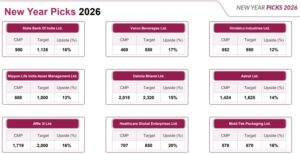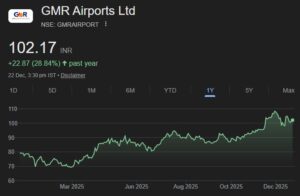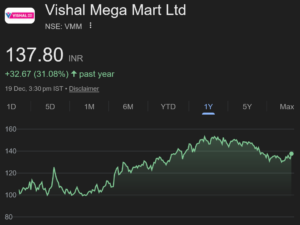MOSt shares Nasdaq-100 ETF will make sense for an investor who is seeking diversification from India-related risks such as the vagaries of the monsoon, political turmoil, high inflation, etc.
The NASDAQ-100 Index includes 100 of the largest domestic and international non-financial securities listed on The Nasdaq Stock Market based on market capitalization. The Index reflects companies across major industry groups including computer hardware and software, telecommunications, retail/wholesale trade and biotechnology. It does not contain securities of financial companies including investment companies.
The NASDAQ-100 Index has given an attractive return if one goes by its past track record. On a Year-to-date (YTD) basis as of 11th March 2011, the NASDAQ-100 Index has returned a 20.14%. On a 5 year basis, the NASDAQ-100 Index has given a return of 38.83% while since inception (25.9.2003), the return is about 23.28%.
Annual Performance of The NASDAQ-100 Index
| Index Name | 1 year | 5 year | 10 year | Since Inception* |
|---|---|---|---|---|
| NASDAQ-100 Index | + 20.14% | + 38.83% | – 1.41% | + 23.28% |
| NASDAQ Biotechnology Index | + 15.25% | + 23.46% | – 58.35% | + 35.36% |
| NASDAQ Composite Index | + 18.02% | + 25.40% | N/A | + 57.52% |
| ABA Community Bank NASDAQ Index | + 11.46% | – 34.65% | N/A | – 21.98% |
| *The America’s Community Bankers NASDAQ Index data is as of 12/5/2003, the other indices data is as of 9/25/2003. | ||||
The NASDAQ-100 Index’s returns compares favourably to the returns offered by the Nifty 50 and the S&P 500 Index for the same period though there is out-performance by the Nifty to some extent.
| NASDAQ-100 INDEX PERFORMANCE (As of 28.2.2011) | |||||
| In some years, the NIFTY has outperformed the NASDAQ | |||||
| CAGR | NIFTY | NASDAQ-100 | S&P 500 | ||
| 1Year | 8.35% | 26.99% | 18.04% | ||
| 2 Years | 38.92% | 36.47% | 26.40% | ||
| 3 Years | 0.70% | 15.08% | 4.11% | ||
| 4 Years | 9.24% | 8.07% | -0.91% | ||
| 5 Years | 11.64% | 7.49% | 1.11% | ||
| 7 Years | 16.78% | 6.95% | 2.14% | ||
| 10 Years | 14.72% | 1.82% | 0.40% | ||
| 12 Years | 14.41% | 7.05% | 3.18% | ||
| 15Years | 11.70% | 14.71% | 9.54% | ||

The NASDAQ-100 Index consists of several well known companies like (i) Apple, the Global Leader in high end phones, tablets and computers, (ii) Qualcomm, the Mobile phone chip maker for HTC, Dell and Samsung Smartphones, (iii) Microsoft, the dominant player in Operating systems and productivity software, (iv) Intel, the Worlds largest computer processor maker (v) Baidu, China’s biggest search engine (vi) RIM, the maker of Blackberry Smartphones, (vii) Google, (viii) Amazon and several other well known companies.
There are three disadvantages of investing in the MOSt shares Nasdaq-100 ETF
Currency Risk:
Though the MOSt shares Nasdaq-100 ETF is denominated in Indian rupees, the underlying securities are obviously purchased in US dollars. The result is that the investor is exposed to the vagaries of currency fluctuation. If the value of the rupee to the dollar appreciates, the investor will lose out because he gets less rupees when the units are redeemed. For example, today (12th March 2011) 1 US Dollar is worth Rs. 45.24. Suppose the US securities were bought at that rate. If at the time of redemption, the conversion rate changes to 1 USD = Rs. 44.24, you lose because you will get lesser for your investment even if there has been no fall in the value of the underlying securities.
Taxation:
While investment in Indian companies and Indian ETFs (such as Nifty BEES, MOSt Shares M50 etc is free of tax if held as a ‘long-term capital asset’ for more than 12 months, the MOSt shares Nasdaq-100 ETF will not enjoy that exemption. Instead, the MOSt shares Nasdaq-100 ETF will be chargeable to tax at the rate of 10 per cent without indexation or at 20% after indexation even if held for more than 12 months.
Co-relation between the Nifty & the Nasdaq:
For proper diversification, there must be no co-relation between two groups of assets. However, in the present case, the co-relation between the Nasdaq-100 Index and the Nifty is 0.29. All equity investments are exposed to global risks. Further, the sources of investments in the stocks of the said two indices, namely, the FIIs is also common. The result is that the MOSt shares Nasdaq-100 ETF may mirror the behaviour of the Nifty or the Sensex to some extent, frustrating the objective of diversification.
If one is really keen on complete diversification, one should look at non-equity investments.
Alternative:
If the investor is really gung-ho on investing in US securities, the alternative is to buy them directly. Under the Reserve Bank of India guidelines, Indian citizens are permitted to remit a sum equivalent to $ 2,00,000 (approximately Rs 90 lakh) overseas in a financial year (April- March). This amount is over and above the amount allowed to be remitted as gifts and donation and is also in addition to the amount permitted to be taken on business or private travel, studies and medical treatment. The amount of $ 2,00,000 can be used to invest in stocks, bonds, options and ETFs in overseas stock markets.
The procedure is that the Indian brokers (Kotak Securities, India Infoline, ICICI Securities etc) act as intermediaries to a foreign broker who buys the shares at the foreign stock exchange and holds it in demat for the investor. Kotak Securities has a tie-up with SAXO Capital Markets while India Infoline has a tie-up with Interactive Brokers LLC.





